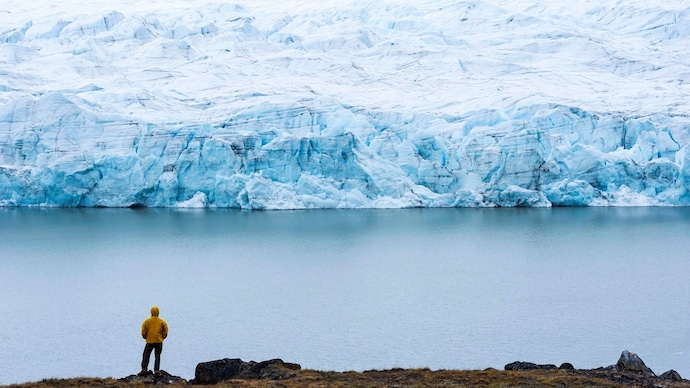Living alongside the algae on the ice, scientists have discovered giant viruses lingering deep below.

These viruses, Perini suspects, could act as a natural control mechanism on the algal blooms. (Photo: Getty)
Every spring, as the Arctic emerges from months of darkness, a remarkable transformation takes place. Polar bears emerge from their dens, arctic terns return from their southern migration, and musk oxen wade northward.
But it's not just animals that are reawakened by the sun's warmth – algae lying dormant on the ice also spring to life, blooming and blackening large areas.
This algal bloom has a significant impact on the ice's ability to reflect sunlight, accelerating its melting and exacerbating global warming. However, researchers may have found a way to control snow algae growth – and potentially reduce ice melting.
Living alongside the algae on the ice, postdoc Laura Perini from Aarhus University's Department of Environmental Science and her colleagues have discovered giant viruses.
These viruses, Perini suspects, could act as a natural control mechanism for the algal blooms.
"We don't know a lot about the viruses, but I think they could be useful as a way of alleviating ice melting caused by algal blooms," Perini explains. "How specific they are and how efficient it would be, we do not know yet. But by exploring them further, we hope to answer some of those questions."
Massive Microbes
Unlike regular viruses, which measure 20-200 nanometers in size, giant viruses can grow up to 2.5 micrometers – larger than most bacteria. Their genomes are also much bigger, containing around 2.5 million letters compared to the 100,000-200,000 found in bacteriophages.
While giant viruses were first discovered in the ocean in 1981, this is the first time they've been found living on surface ice and snow dominated by pigmented microalgae.
A Thriving Ecosystem
"A few years ago, everyone thought this part of the world to be barren and devoid of life," Perini says. "But today, we know that several microorganisms live there – including the giant viruses."
Perini and her team found signatures of active giant viruses in both dark ice and red snow samples, indicating a complex ecosystem surrounding the algae. "Besides bacteria, filamentous fungi, and yeasts, there are protists eating the algae, different species of fungi parasitising them, and the giant viruses that we found, infecting them," she explains.
Unraveling the Mysteries
While the researchers have yet to see the giant viruses with their own eyes, they've detected their DNA and mRNA in samples, confirming their presence and activity. However, many questions remain about their exact role and interactions within the ecosystem.
"We keep studying the giant viruses to learn more about their interactions and what is exactly their role in the ecosystem," Perini says. "Later this year, we'll release another scientific paper with some more info on giant viruses infecting a cultivated microalgae thriving on the surface ice of the Greenland Ice Sheet."
As the Arctic continues to warm, understanding the intricate relationships between these microscopic players could be crucial in mitigating the effects of algal blooms and preserving the region's delicate balance.
Published By:
Sibu Kumar Tripathi
Published On:
Jun 6, 2024













 English (US) ·
English (US) ·